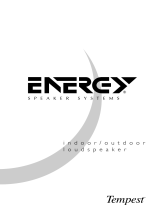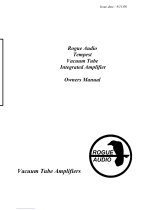
724-746-5500 blackbox.com
2 of 3
8/11/2011
#26712
» TEMPEST approved.
» High levels of port isolation prevent data
leakage.
» DVI resolution.
» Secure switching between computers with USB,
DVI-I, and audio connections.
» Permanently hard wired. Every circuit is
soldered and there is no flash ROM. There is no
way to access one CPU from the other or to
access one network from the other.
» Diodes also provide very high levels of isolation
to swamp any crosstalk signals between
connected computer circuits.
» Unidirectional keyboard and mouse signaling
thwarts hacking via timing analysis, USB
common storage Trojans, keyboard light
emissions snooping, and forced malfunctions.
» Heavy-duty metal casing is electrically bonded
and ensures low emissions to minimize snooping
risks.
» USB keyboard and mouse connections produce
substantially less radiated emissions than PS/2
®
ones do, making it difficult to snoop data
transmissions.
» Digital DVI-I video provides even greater
security. Its signals are differential, DC balanced,
and encoded.
» DVI-I video also provides exact video quality
and is backwards compatible with analog VGA
equipment.
» True DDC video support. For highly secure
installations, DDC data can be bypassed or
disabled.
» Clear stereo audio switching circuit for speaker
connections eliminates interference and crackle.
» NSA tested and TEMPEST approved for and by
the U.S. Air Force. Other agencies under review
for approval. For details, call Tech Support at
877-877-2269.
FEATURES
Monitor with DVI-I
or VGA Interface
USB Keyboard
and Mouse
TCP/IP Secure
Network (SIPRNet)
USB CPUs with
DVI or VGA Video
USB CPUs with
DVI or VGA Video
TCP/IP Non-Secure
Network (NIPRNet)
ServSwitch
™
Secure
with USB (SW4007A-USB)
Secure Network
Non-Secure Network
Typical Application.
TEMPEST.
TEMPEST is an acronym for Telecommunications Electronics
Material Protected from Emanating Spurious Transmissions.
It pertains to technical security countermeasures, standards,
and instrumentation that prevent or minimize the exploitation
of vulnerable data communications equipment by technical
surveillance or eavesdropping.
Beware the microchip.
Any device with a microchip generates an electromagnetic
field, often called a “compromising emanation” by security
experts. With the proper surveillance equipment, these
emanations can be intercepted and the signal reconstructed and
analyzed. Unprotected equipment can, in fact, emit a signal into
the air like a radio station—and nobody wants to risk his or her
job and a whole lot more by broadcasting national security or
trade secrets to the wrong people.
Some of the most vulnerable devices are speakerphones,
printers, fax machines, scanners, external disc drives, and other
high-speed, high-bandwidth peripherals. If the snoop is using
a high-quality interception device, your equipment’s signals can
be acquired up to several hundred feet away.
Arguably one of the most vulnerable pieces of equipment
is an analog VGA monitor. If a spy were to introduce a Trojan into
your system, he or she could monitor and store key presses and
passwords used during the day. When the system’s not in use at
night, the spy could pulse the VGA screen with grayscale images
that have a strong signal at particular frequencies. VGA uses
single-ended signaling that has a high common-mode emission
level not protected by cable shielding, and it’s possible to monitor
these signals outside the secure zone using a radio receiver. Even
without a Trojan, a sophisticated receiver located nearby picks up
and views what’s on the VGA monitor.
What TEMPEST is and isn’t.
It should come as no surprise that the federal government
became concerned about signal leakage. In fact, its interest goes
back to the days of World War I when the Army was trying to
exploit weaknesses of enemy combat phones and radio
transmitters. Since then, the scope of the government’s interests
has broadened beyond battlefield equipment. In the last 40 years,
the National Security Agency (NSA) has taken several industry
measurement standards and greatly beefed them up. These
enhanced criteria are commonly referred to as the TEMPEST
standards (although the NSA also calls them EMSEC standards,
short for “emissions security”).
TEMPEST disciplines involve designing circuits to minimize
emanations and the application of appropriate shielding,
grounding, and bonding.
Technically Speaking




